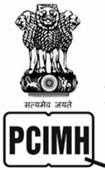Designed & Developed by M/s Akiko Sherman Infotech, Hosted by NIC/NICSI Content Provided by Pharmacopoeia Commission for Indian Medicine & Homoeopathy
Homoeopathy
Homoeopathy was discovered by a German Physician, Dr. Christian Friedrich Samuel Hahnemann (1755-1843), in the late eighteenth century. It is a therapeutic system of medicine premised on the principle, “Similia Similibus Curentur” or ‘let likes be treated by likes'. It is a method of treatment for curing the patient by medicines that possess the power of producing similar symptoms in a healthy human being simulating the natural disease, which it can cure in the diseased person. It treats the patients not only through holistic approach but also considers individualistic characteristics of the person. This concept of ‘law of similars' was also enunciated by Hippocrates and Paracelsus, but Dr. Hahnemann established it on a scientific footing despite the fact that he lived in an age when modern laboratory methods were almost unknown.
PCIM&H coordinates with Homoeopathic Pharmacopoeia Committee (HPC) to publish/validate/arrange for various activities regarding official Pharmacopoeia for quality standards of single drugs of plant/chemical/mineral/animal origin listed in the Homoeopathic Pharmacopoeia of India at suitable intervals and of such addenda or supplementary compendia during the intervening periods as may be deemed necessary.These pharmacopoeias serve as official compendia of standards under the Drugs and Cosmetics Act, 1940.
Activities
- To provide technical support to Homoeopathic Pharmacopoeia Committee (HPC) and subcommittees under Scientific Advisory Board (SAB) of PCIM&H.
- To provide technical support to manufacture Homoeopathic medicines
- Developing Standard Operating Procedures (SOPs) of Homoeopathic drugs
- Technical review and support to publish Homoeopathic Pharmacopoeia of India (HPI)
- Research & Development and publishing related scientific information
- Any other technical and non-technical work pertaining to Homoeopathy













